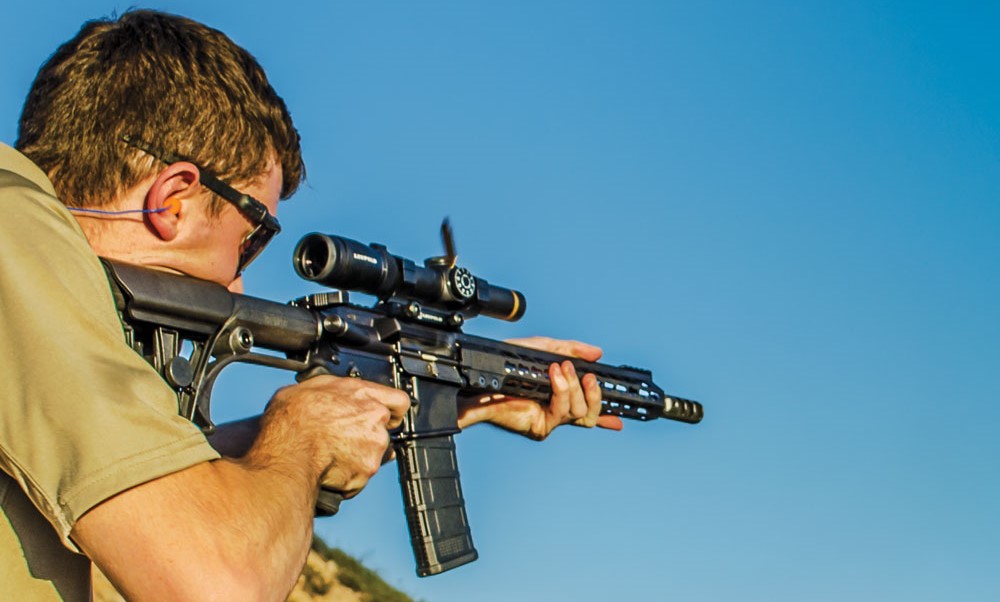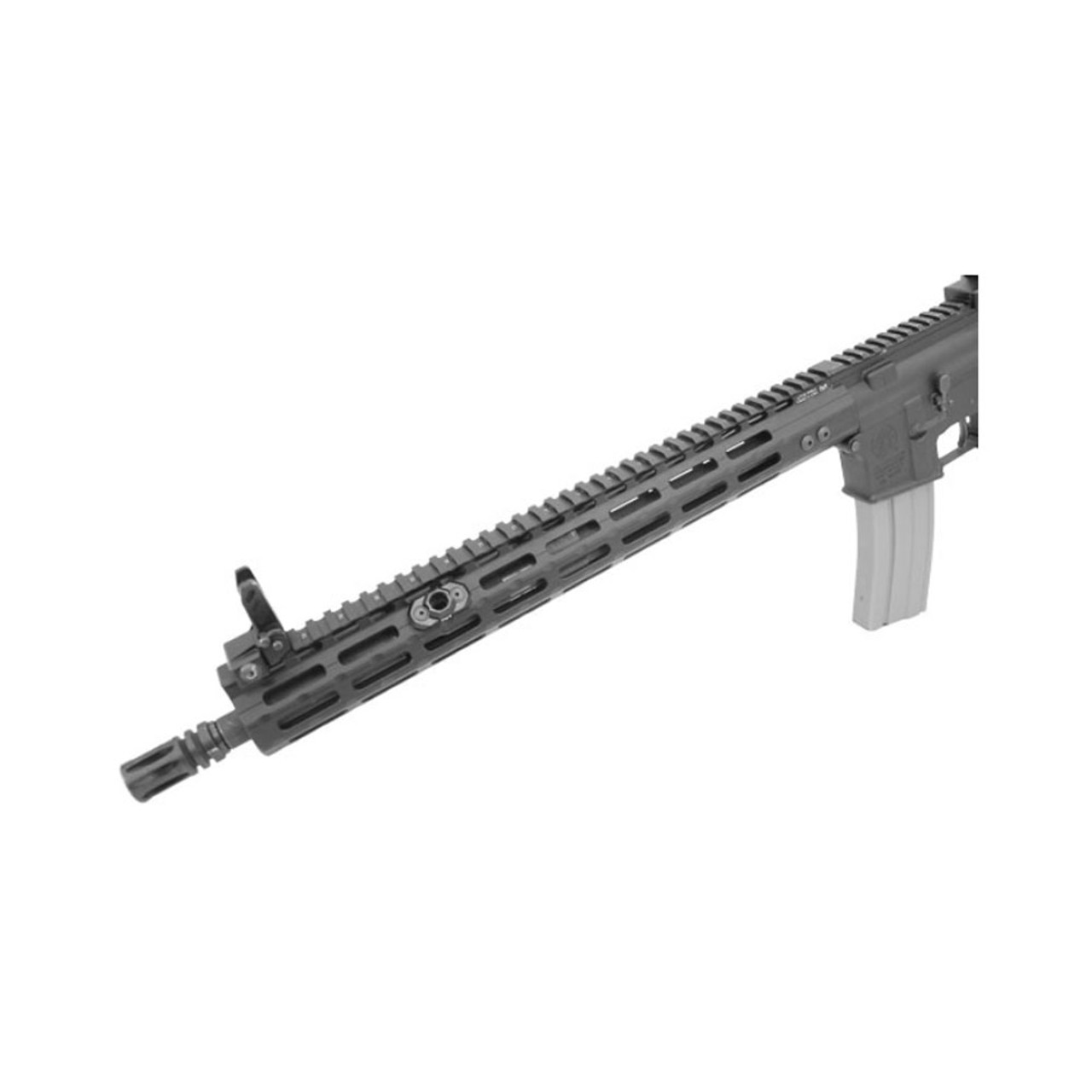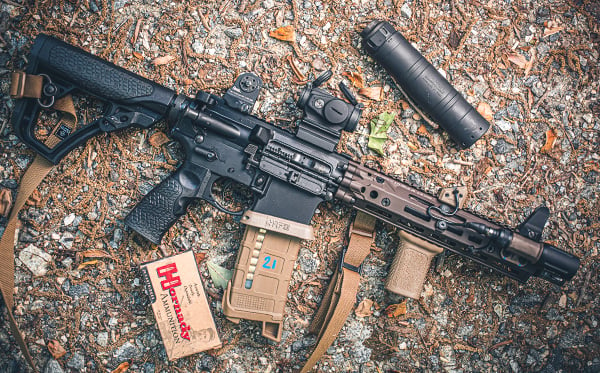The Best Tips for Choosing the Right 5.56x45 Rifle
Since you've been searching for some info about 5.56 rifles, you already know the benefits of this caliber, which are low recoil compared to other popular rifle cartridges, such as the .308 Winchester; one of the lowest cost per round, accuracy, and light weight of the firearm. Besides, since it's a standardized military caliber, finding compatible ammunition and accessories is generally not an issue.
You might have discovered that lots of people talk about the AR-15 when you try to learn something about 5.56-caliber rifles. The reason is that the AR-15 is the most popular rifle pattern chambered for the 5.56 NATO. However, there are AR15-style rifles chambered for alternative cartridges, like the 9mm Luger or the .300 BLK, just like there are 5.56mm rifles that don't employ the standard AR-15 design.
Yet, the truth is that the majority of 5.56 rifles are AR-15s. So, in this guide, we'll be discussing mostly AR-15 5.56 rifles. We'll touch on different variants of the AR-15, types of gas systems and barrels, as well as features that speak quality.
Consider the Gas System Length of Your 5.56 Rifle

The gas system is what pushes or “cycles” the rifle after each shot. Logically, it affects the pressure exerted on the brass case when ejecting it. Depending on what type of gas system your rifle utilizes, certain benefits and impairments can be expected in terms of reliability, shootability, and recoil control.
The four main types of gas systems used in AR-15s are Pistol Length, Carbine Length, Mid-Length, and Rifle Length. To choose one, you need to think of the purpose of the rifle.
Pistol Length Gas System: It's typically found on short-barreled (10.5” or under) rifles and has several benefits relative to size and portability. This system is reliable but may require more frequent cleaning due to the shorter dwell time within the barrel. On the downside, this system generates higher pressure within the barrel which can hurt shootability and contribute to increased felt recoil due to greater backpressure during cycling.
Carbine Length Gas System: These are generally seen in barrels between 10.5” and 18” and offer a great balance between recoil control and functionality. This setup provides a reliable cycling rate with lower pressure resulting in enhanced accuracy and lighter felt recoil while still allowing users to maintain portability with their rifle setup. The main downside lies in a slightly longer dwell time within the barrel, which may require more frequent cleaning sessions if not maintained properly over time.
Mid-Length Gas System: An upgrade from carbine length systems, the mid-length setup offers improved reliability with even lower felt recoil than its predecessor thanks to additional dwell time supported by longer barrels (14”-20”). As with most long gas systems, shooters can expect better accuracy under controlled muzzle rise as well as significant improvements in reliability without sacrificing too much portability with their setup. However, extended dwell times may require additional maintenance depending on usage frequency.
Rifle Length Gas System: The longest configuration available for AR-15s offers enhanced accuracy through lower pressures coupled with generous dwell time but comes at a cost of reduced portability due to size constraints. Increased weight may lead to greater stability than other systems, especially at longer distances.
Look for the Right Barrel Length for Your Use
Barrel length is one of the most important factors to consider. For example, if you're looking for supreme accuracy, you'll likely want a 20-inch AR-15 as this length provides extra muzzle velocity that contributes to tighter shot groupings. It's also ideal for hunting for the same reason, which translates into more knockdown power. Furthermore, since it's the standard barrel used for such rifles it also offers great compatibility with various accessories available on the market.
On the other hand, shorter versions such as an 18- and especially 16-inch barreled AR-15 can provide a bit better maneuverability in close-quarter combat scenarios while still offering decent accuracy at mid-range distances. Such setups are well suited for recreational shooting and home defense applications due to their precision and portability.
There is also the M4-style 14.5-inch carbine, which originally is a 5.56 military rifle popular thanks to a great balance between maneuverability and power. On the other hand, we get stronger recoil and lower accuracy.
Finally, we have AR pistols that utilize barrels ranging from 7” to 12”, making them excellent choices for home defense scenarios where maneuverability is vital.
Consider Different Barrel Materials
Choosing the right barrel material for an AR-15 can significantly impact the rifle’s performance and durability. So, there are three main types of materials used in manufacturing AR-15 barrels: Chrome Lined, Stainless Steel, and Nitrided. All three provide different benefits in terms of accuracy and durability.
Chrome Lined Barrels: These barrels are made from 4140 Chrome Moly Steel and feature a chrome coating internally which provides reliable protection against corrosion while allowing for faster break-in periods due to increased resistance to fouling from powder residue. However, this setup usually doesn’t offer as much precision as some of its counterparts. Rifles with chrome-lined barrels are capable of hitting a man-sized target at up to 600 yards.
Stainless Steel Barrels: This type of barrel is constructed from 416-grade stainless steel and offers superior accuracy compared to chrome-lined models thanks to tighter tolerances resulting in better overall precision when shooting at medium-range distances. Additionally, it’s highly resistant to corrosion making it ideal for harsh environments where rainfall or heavy humidity may be present. However extended exposure to saltwater can lead to rusting if not properly maintained.
Nitride-treated barrels provide outstanding corrosion resistance due to a protective layer formed inside their structure which helps limit fouling accumulation over time. This makes them perfect for shooters who don't want to worry about having their rifles cleaned frequently but still get great performance out of their setup. All in all, this type offers a good balance between accuracy and durability.
Opt for Free-Float Rails

Free-float rails are one of the most popular accessories for AR-15 rifles due to their numerous benefits over drop-in units. By not being in contact with the barrel, free-float rails allow for improved accuracy as pressure from accessories such as optics and lights that would otherwise affect the rifle's performance is eliminated.
Additionally, free-float rails provide more space for mounting other accessories and offer better cooling than traditional designs due to increased airflow inside its system resulting in less heat buildup after extended use.
However, if ease of installation, lighter weight, and lower cost is of a higher preference to you, go with a drop-in design.
Look for a Mil-Spec 5.56 Rifle
The term “Mil-Spec” is often used to describe AR-15 rifles, but what does it actually mean to a shooter?
In short, Mil-Spec refers to military specification standards that must be met and maintained for firearms to be deemed acceptable for use by the armed forces. This concerns parts such as barrels, BCGs, receivers, and other components constructed from high-quality materials designed for longevity and durability under extreme conditions.
For civilian shooters, Mil-Spec AR-15s are usually the best option because they offer reliable performance under any circumstances. However, this doesn't mean non-Mil-Spec rifles are bad, as there are plenty of alternatives out there designed specifically for hunting or sport shooting purposes. It all comes down to personal preferences and intended use. So, while non-Mil-Spec pieces may not have optimal performance under certain situations, they can still provide great value in terms of affordability and accuracy, depending on how they're used.
Learn About the Best Brands for AR-15s (or Other 5.56 Rifles)

Understanding what each brand has to offer is important when it comes to selecting the best 5.56 rifle. By researching each company’s products in detail and considering your individual needs, you can be sure you’re getting the best rifle for your money.
The top manufacturers of AR-15s include Daniel Defense, Wilson Combat, Sig Sauer, Bravo Company, and Ruger. All have a reputation for manufacturing high-quality, durable 5.56 semi-automatic rifles designed to perform in any situation. Ruger also makes great 5.56 hunting rifles.
If you're looking for a reliable but affordable AR-15, some of the best brands include DPMS, Palmetto State Armory, Swith&Wesson, Bushmaster, and Spike's Tactical. These companies are well known for producing quality firearms that are both durable and reasonably priced. They offer a wide range of features and customization options that allow users to find the perfect rifle without breaking the bank!
Additionally, if you're looking for a great non-AR-15 rifle chambered for the 5.56 NATO, take a look at the SIG MCX, the Steyr AUG, the FN SCAR 16S, the Kel-Tec SU16, and HK SL8-6.
As you see, you have plenty of options. From DPMS and Palmetto State Armory to Savage Arms and Remington, GRITR Sports has a wide range of reliable and affordable firearms that provide excellent performance and customization options. Now, make sure to choose the one that fits your needs best, whether it’s accuracy, maneuverability, recoil control, durability, or affordability.
FAQ
What is the difference between a 5.56 rifle and an AR-15?
The AR-15 is a specific pattern of a semi-automatic rifle that uses a direct impingement system and a detachable magazine, while the 5.56 rifle is any rifle chambered for the 5.56 NATO cartridge.
What are the different types of 5.56 rifles available?
We can have anything you want, from a standard AR-15 to a bolt-action hunting rifle or a long-barreled sports shooting rifle.
What should I consider when choosing a 5.56 rifle?
When selecting a 5.56 rifle, consider intended use, its accuracy at certain distances, twist rate, gas system type, weight, quality of the materials used, Mil-Spec designation, and the manufacturer.
Are there any specific brands that make great AR-15s?
Some of the most popular brands of AR-15s are Colt, Bravo, HK, Daniel Defense, Wilson Combat, Smith & Wesson, Ruger, Rock River Arms, and Sig Sauer.
Recent Posts
-
The End of an Era: Why Cheaper Than Dirt Stopped Selling Guns
Recently, Cheaper Than Dirt, a major online gun store based in Fort Worth, made headlines by steppin …Oct 24th 2024 -
A Guide to Hunting, Sporting & AR-15 Rifle Barrels
In this post, we’re discussing rifle barrel types in terms of materials, finishes, profiles, twis …Jun 11th 2024 -
Rifle Magazine Variants: Choosing the Right Capacity & Material
We made this quick guide to rifle magazines for all beginner rifle owners wondering what the capa …Jun 3rd 2024




